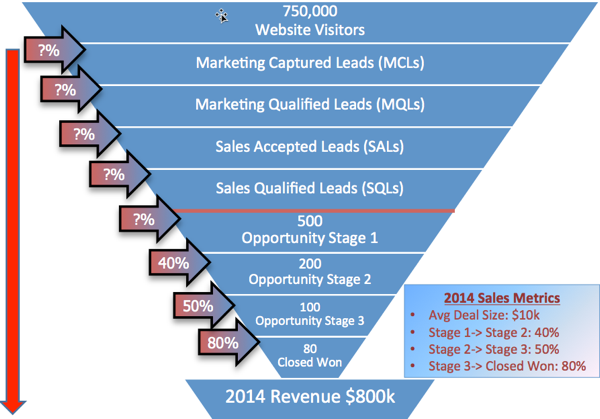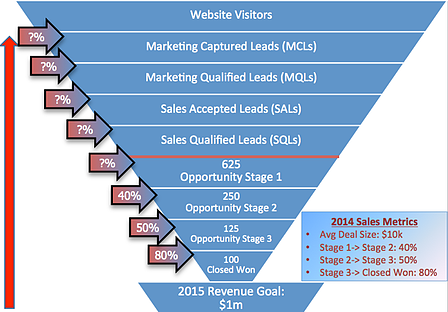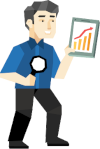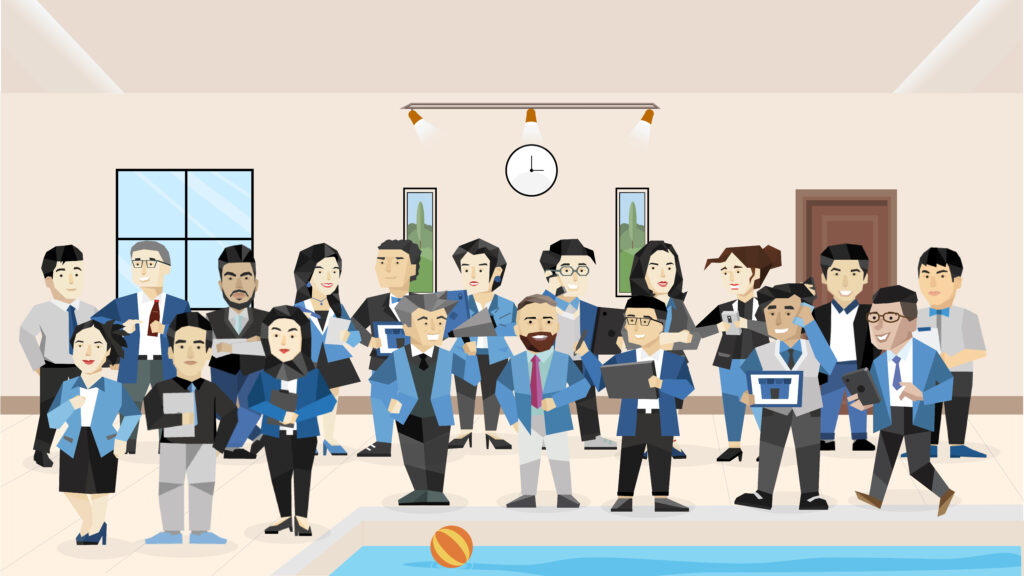Align The Marketing & Sales Lead Management Process From The Bottom Up

When we think about marketing and sales integration and the responsibilities each team has toward the other, we more often focus on what marketing does to contribute to the success of sales rather than how sales contributes to the success of marketing.
We consider how marketing funds sales by attracting more prospects to your website, how marketing generates new leads to pass on to sales as part of your lead management process, and how marketing provides sales with the collateral and resources they’ll need to share with prospects as part of your inbound sales process.
Despite the significance and impact that marketing efforts can have on the success of demand and revenue growth in a company, marketers don’t always know precisely what results their efforts should yield.
To drive results and build a fully integrated marketing and sales process, sales needs to hold marketing accountable for completing its share of the conversion funnel, and marketing needs to clearly understand the sales targets necessary for your company to achieve its revenue goals.
Tracking Conversion Rates Isn’t Just For Sales
Sales always seems to be the ones that have a good handle on the conversion rates that their efforts yield. A sales manager could probably tell you at any given time what their close rate is or their opportunity to closed-won conversion percentage.

Conversely, how many marketers know the exact output their efforts need to generate to ensure that their sales colleagues will meet their goals and the company will make their numbers?
If you’re not tracking your conversion rates throughout the entire marketing and sales funnel, how can your business establish precise goals and effectively manage time and resources?
Look at this illustration. Sales knows their data, and all marketing knows is how many website visitors they had last year. On a good day marketing might be able to throw out a guestimate of how many total leads they generated. Unfortunatley though, what we’re missing here, are the conversion rates for each stage of marketing’s lead management process.
Given this illustration, how do you suspect the marketing team would know whether or not their efforts and results are behind, on pace, or ahead of a plan? (A plan that must result in a successful year or heads are going to roll!)
This information is great for sales to know, but keeping it to yourselves can prevent one giant achievement:
Marketing & Sales Integration
Your business’ inbound marketing strategy and inbound sales process will be working independently of one another until marketing completes this funnel through to their lead sources (In this case the source will be the website) and as a marketer or business owner, the first place you will notice this is in your ability to set accurate goals and manage people’s efforts accordingly.
Can You Set Accurate Goals Without Completing Your Funnel?
Being able to set goals according to historical data is valuable for any size business as it results in efficiency, agility and effectiveness.
It is even more critical for small and medium-sized businesses (SMBs) to succeed in forecasting correctly to ensure that time and money invested are not wasted foolishly.

Here’s how it will look, trying to forecast next year’s sales and marketing plan without having the conversion rates for marketing’s lead management process.
You can see that because sales knows their 2014 conversion rates as part of their inbound sales process, they begin to back into the number of opportunities they’ll need at each stage in 2015, to achieve the $1m revenue goal, which is a 25% increase from their 2014 revenue of $800k.
Given this scenario, in which marketing does not know this similar information, 2 questions arise:
- How will marketing set accurate goals for their team and initiatives this coming year?
- How confident will sales feel that they are in good hands and that their colleagues know exactly what it will take for the business to reach their goals?
On a side note, I believe situations like this contribute to the frustration I hear about how much money they’re spending on marketing and the subsequent uncertainty regarding the worth of the investment.
Let’s examine what happens when marketing completes the funnel:
Marketing Completes The Funnel & Achieves Integration

Now we revisit the scenario but under the pretense that marketing has the conversion rate data from their lead management process in 2014.
– Website Visitors to Marketing Captured Leads (MCLs): 1%
– MCLs to Marketing Qualified Leads (MQLs): 47%
– MQLs to Sales Accepted Leads (SALs): 38%
– SALs to Sales Qualified Leads (SQLs): 70%
– SQLs to Stage 1 Sales Opportunities: 50%
In these illustrations you can see how marketing and sales integration is beginning to take shape as marketing applies the conversion rate data from 2014 to complete the marketing and sales funnel from the bottom up.
Create Your Marketing & Sales Forecast and Manage Accordingly
If sales has a goal of $1m in annual new business revenue and the average new business deal size is $10k then:
– Sales needs to win 100 deals
– A Stage 3 Opportunity converts to a Closed Won deal at 80%; Sales needs 125 Stage 3 Opportunities
– A Stage 2 Opportunity converts to Stage 3 at 50%; Sales needs 250 Stage 2 Opportunities
– A Stage 1 Opportunity converts to Stage 2 at 40%;Sales needs 625 Stage 1 Opportunities to achieve their annual goal of $1m in new business.
Now it is marketing’s turn:
– SQLs convert to Stage 1 Opportunities at 50%; Sales & marketing will need to generate 1,250 Sales Qualified Leads.
– SALs convert to SQLs at 70%; Marketing will need to generate 1,786 Sales Accepted Leads
– MQLs convert to SALs at 38% Marketing will need to generate 4,700 Marketing Qualified Leads
– MCLs convert to MQLs at 47% Marketing will need to generate 10,000 Marketing Captured Leads
– Website Visitors convert to MCLs at 1%; Marketing will need to generate 1,000,000 website visitors
If sales has a goal of $1m in annual new business revenue and the average new business deal size is $10k then:
– Sales needs to win 100 deals
– A Stage 3 Opportunity converts to a Closed Won deal at 80%; Sales needs 125 Stage 3 Opportunities
– A Stage 2 Opportunity converts to Stage 3 at 50%; Sales needs 250 Stage 2 Opportunities
– A Stage 1 Opportunity converts to Stage 2 at 40%;Sales needs 625 Stage 1 Opportunities to achieve their annual goal of $1m in new business.
Now it is marketing’s turn:
– SQLs convert to Stage 1 Opportunities at 50%; Sales & marketing will need to generate 1,250 Sales Qualified Leads.
– SALs convert to SQLs at 70%; Marketing will need to generate 1,786 Sales Accepted Leads
– MQLs convert to SALs at 38% Marketing will need to generate 4,700 Marketing Qualified Leads
– MCLs convert to MQLs at 47% Marketing will need to generate 10,000 Marketing Captured Leads
– Website Visitors convert to MCLs at 1%; Marketing will need to generate 1,000,000 website visitors

Your inbound sales process and your inbound marketing strategy should work together with this funnel in mind. Everything that you do should be tied back to achieving or exceeding these numbers.
Bear in mind that exceeding these numbers doesn’t solely pertain to the quantity at each stage; you could also aim to outperform the legacy conversion percentages from stage to stage by doing things such as:
- Refining your buyer personas
- Creating content more frequently that is more targeted towards your buyer personas
- Creating premium content offers with your buyer personas in mind to generate higher quality leads
- Fully integrating your marketing software and CRM system
- Continuously educating your sales team using an inbound sales process approach








